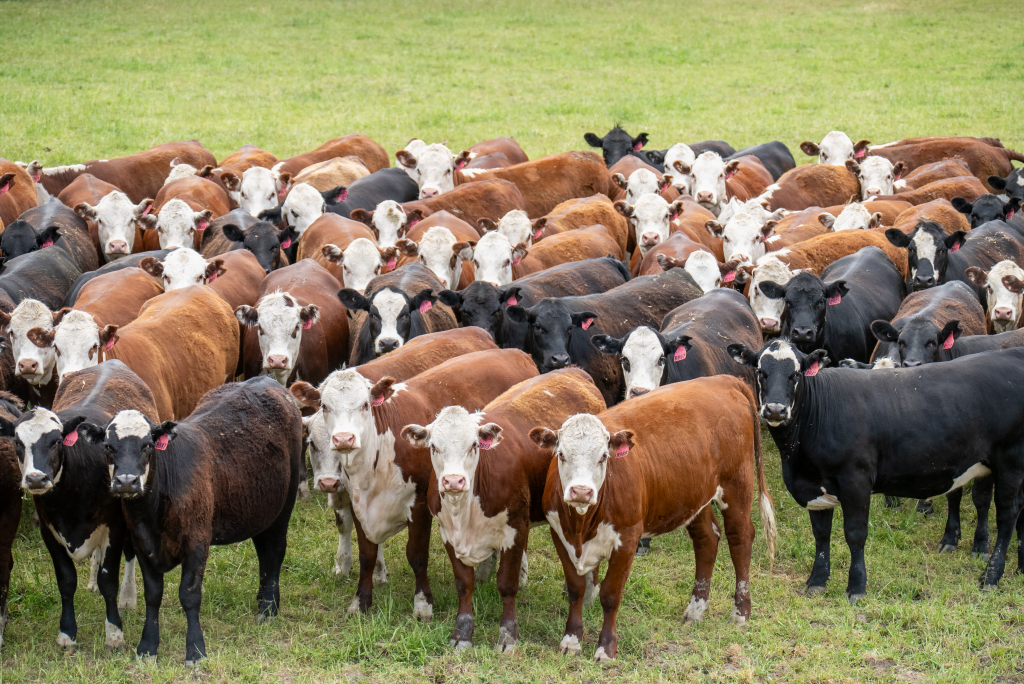Master the Art of Food Preparation With Grass Fed Meat
In the world of cooking proficiency, mastering the art of food preparation with grass-fed meat holds a distinguished setting. The unique high quality of grass-fed meat provides a myriad of advantages that not just raise the taste of recipes yet also add to a much healthier way of life. From the tender texture to the durable flavor profile, grass-fed meat presents a canvas for cooking creative thinking. As we discover the subtleties of this premium meat choice, uncovering the very best food preparation approaches, flavor pairings, and storage strategies, a globe of gastronomic possibilities unfolds. Whether you are a skilled chef or an aspiring home chef, diving into the realm of grass-fed meat promises a trip filled with delectable experiences and culinary revelations.
Benefits of Grass-Fed Meat

When choosing grass-fed meat, customers can profit from its greater levels of omega-3 fatty acids and anti-oxidants compared to traditionally elevated meat. Constance Cattle. Omega-3 fatty acids are crucial nutrients that support brain wellness, reduce swelling, and promote heart health. Grass-fed meat is recognized to have up to five times extra omega-3 fats than grain-fed meat, making it a healthier choice for those seeking to boost their consumption of these helpful fats
Along with omega-3 fatty acids, grass-fed meat is likewise richer in antioxidants such as vitamins E and C, as well as beta-carotene. Anti-oxidants play a critical duty in protecting cells from damage triggered by cost-free radicals, which can add to numerous chronic conditions and increase aging. By choosing grass-fed meat, customers can not only appreciate a more nutrient-dense and delicious healthy protein resource yet additionally support their overall health and health.
Integrating grass-fed meat into your diet regimen can be a basic yet effective way to boost your dietary intake and enjoy the advantages of omega-3 fats and anti-oxidants that are naturally abundant in this kind of meat.
Best Cooking Techniques
Utilizing suitable cooking techniques is important to preserve the nutrient profile and boost the flavor of grass-fed meat. When cooking grass-fed meat, it is essential to keep in mind that it is leaner than conventionally elevated meat, making it much more prone to drying out if overcooked. To ensure a juicy and flavorful result, consider cooking grass-fed meat at a little lower temperature levels than you would with grain-fed meat.
Cooking is a prominent method for food preparation grass-fed meat as it allows excess fat to leak away, stopping flare-ups that can trigger charring. One more terrific food preparation technique for grass-fed meat is pan-searing.
Sluggish food preparation methods such as braising or stewing are additionally superb choices for harder cuts of grass-fed meat, as they assist damage down the muscle fibers and soften the meat. Whichever cooking technique you select, keep in mind to allow grass-fed meat rest after preparing to allow the juices to redistribute, making certain a damp and tender final meal.
Flavor Pairings and Seasonings
To boost the all-natural flavors of grass-fed meat, strategic taste pairings and flavorings play a critical role in elevating the overall eating experience. Grass-fed meat has an abundant, distinctive preference that can be matched and improved by very carefully chosen ingredients. When it involves flavor pairings, natural herbs like thyme, rosemary, and oregano job remarkably well with grass-fed beef, lamb, or bison. These herbs include depth and earthiness to the meat, improving its natural tastes without overpowering them.
In addition to herbs, spices such as black pepper, garlic, and smoked paprika can additionally raise the taste profile of grass-fed meat dishes. These spices give a balance of warmth, sweetness, and smokiness that can improve the general eating experience. When seasoning grass-fed meat, it is important to use premium salt, like sea salt or Himalayan salt, to bring out the meat's flavors without including unneeded chemicals or additives.
Storage Space and Handling Tips
Proper helpful hints storage space and managing practices are essential for keeping the top quality and freshness of grass-fed meat. Prevent keeping grass-fed meat near strong-smelling foods as it can take in smells conveniently.
When managing grass-fed meat, it is Extra resources very important to practice good health to avoid cross-contamination. Wash your hands extensively before and after taking care of the meat, and ensure that all utensils and surface areas that enter contact with the meat are cleaned up and sanitized properly. Additionally, make use of separate cutting boards for meat and veggies to prevent microbial transfer.

Leading Grass-Fed Meat Recipes
When taking into consideration the most effective methods to savor the high quality and freshness of grass-fed meat, exploring superior recipes can boost your cooking experience. Grass-fed meat's abundant flavor and leaner account lend themselves well to a variety of meals that highlight the all-natural benefits of the meat. One leading dish to try is a classic Grilled Grass-Fed Ribeye Steak skilled with basic components like salt, pepper, and a touch of garlic for a robust taste. For a comforting dish, a Slow Cooked Grass-Fed Beef Stew with root veggies and fragrant herbs is a hearty alternative that highlights the meat's inflammation.
If you're in the state of mind for something lighter, a Grilled Grass-Fed Burger offered with fresh toppings and a side of pleasant potato french fries is a scrumptious selection. In addition, a Herb-Crusted Grass-Fed Rack of Lamb roasted to perfection with a collection of breadcrumbs and natural herbs is a show-stopping recipe for find more information special occasions. These leading grass-fed meat recipes showcase the convenience and superior quality of grass-fed meat, permitting you to appreciate its premium taste in different culinary developments.

Final Thought
To conclude, mastering the art of food preparation with grass-fed meat uses various advantages, consisting of improved dietary value and exceptional taste. By utilizing the most effective cooking approaches, trying out with taste pairings and seasonings, and complying with proper storage and taking care of suggestions, you can create delicious and nutritious recipes. Experiment with some leading grass-fed meat dishes to raise your culinary abilities and appreciate the complete possibility of this high-grade active ingredient.
When cooking grass-fed meat, it is important to keep in mind that it is leaner than traditionally raised meat, making it a lot more vulnerable to drying out if overcooked. To guarantee a juicy and tasty result, consider cooking grass-fed meat at slightly lower temperature levels than you would with grain-fed meat.
When seasoning grass-fed meat, it is necessary to make use of premium salt, like sea salt or Himalayan salt, to bring out the meat's flavors without including unnecessary chemicals or ingredients.
Grass-fed meat's rich flavor and leaner profile lend themselves well to a selection of meals that highlight the all-natural goodness of the meat. These leading grass-fed meat dishes showcase the convenience and exceptional quality of grass-fed meat, enabling you to enjoy its remarkable taste in numerous culinary creations.